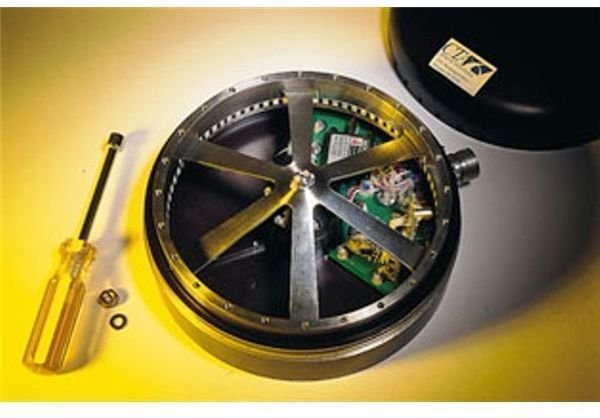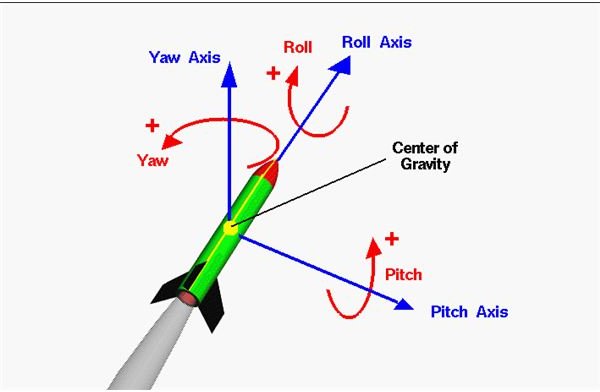All About Satellite Reaction Wheels
Replacing Precession with Newton.
While our manned spacecraft generally utilize small rocket thrusters for attitude control—controlling the position of the spacecraft in pitch, yaw and roll—that is not always practical for unmanned craft. For one, there is no human mind to make the fine adjustments that might be needed. For another, particularly for our space telescopes, especially the Hubble, the attitude adjustments are extremely precise and critical. If Hubble is not pointed at the exact spot in the sky where its sought after star or galaxy is, an astronomer’s valuable time has been wasted.
Yet, even on a huge satellite like Hubble, there is not room for a sufficiently large gyroscope—three (actually four) of them at that—to point the telescope. But Newton’s Third Law gives us a way. For every action there is an opposite and equal reaction. If we spin up a relatively large massive flywheel—but small compared to the satellite—to a high speed, around 6000 rpm, then a relatively small change in its speed will cause that opposite and equal reaction.
Speed it up just a tad and the spacecraft turns one way. Slow it down a bit and we move the other way. This is the way reaction wheels work.
The beauty of the reaction wheel for attitude control is that it permits very precise movements. A satellite can be pointed within a fraction of an arc second.
Inside the Reaction Wheel
Basically, a reaction wheel consists of a flywheel with most of its mass on the rim, a small but powerful dc motor, controllers for varying the speed of the flywheel, and sensors that sense the speed of the flywheel.

The basic design of the reaction wheel also makes it capable of keeping a satellite in a proper attitude, when that is vital. For example, communication satellites, including those you may receive your TV from, must be oriented properly at all times. Otherwise, they will neither receive the ground signals, nor send their signal to the ground receiving station—or your satellite dish.
When the device is used for attitude maintenance, it is referred to as a momentum wheel because the concept is that angular momentum is being transferred between the flywheel and the spacecraft. In fact, the two functions are being combined in today’s reaction wheel mechanisms. They are called reaction/momentum wheels and both stabilize the spacecraft’s attitude and provide precision attitude maneuverability.
How NASA Creates Industries
The development of the reaction wheel is a perfect example of how the space program creates new products, industries and jobs.
The reaction wheel was conceived, designed and developed at Goddard Spaceflight Center in Greenbelt, MD in the ‘90s. Originally developed for small spacecraft, they have graduated to large ones like Hubble.
NASA patented the reaction wheel in 1997, and chose CTA Space Systems, Inc. (now Orbital Sciences Corp.) as the licensee to build and market the device. So this invention by NASA helped a company grow, created jobs, and built a new market.
Reaction wheels are now built by many firms, which have developed new designs.
A Part of Every Control System
Today, reaction/momentum wheels are a part of every unmanned spacecraft control system, even when attitude control rockets are used for larger maneuvers. Their ability to provide small precise attitude maneuvers, and to stabilize a vehicle to a virtual standstill make them the ideal control. They are used even on reentry vehicles to maintain proper attitude during the fiery plunge into the atmosphere.
They may be used on our next generation of manned spacecraft.
Sources and Credits
Sources:
Reaction wheels: Sinclair Interplanetary https://www.sinclairinterplanetary.com/SSC07-X-3.pdf?attredirects=0
Conserve of angular momentum: Science World https://scienceworld.wolfram.com/physics/ReactionWheel.html
License: NASA https://www.nasatech.com/Spinoff/spinoff1997/t3.html
Momentum wheel: AIAA https://www.aiaa.org/Spaceops2004Archive/downloads/papers/SPACE2004sp-template00421F.pdf
Credits:
All illustrations: NASA
